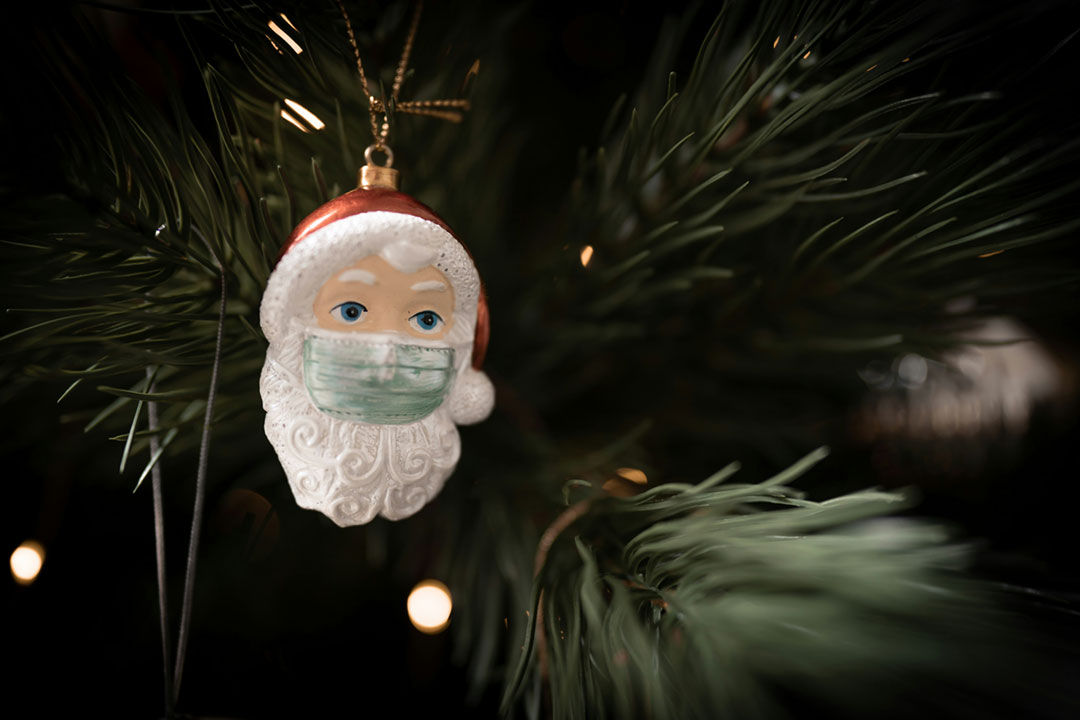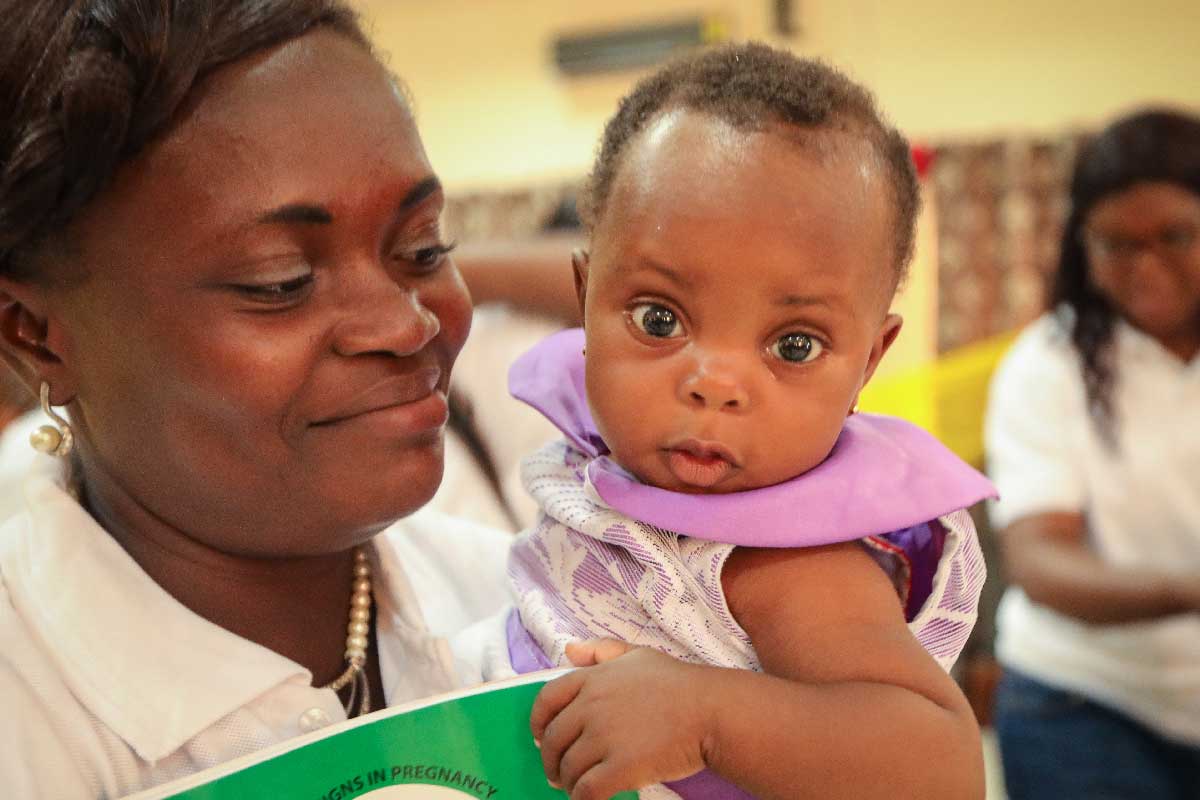How you can avoid catching the latest COVID-19 variants this Christmas
Cases of the KP.3.1.1. and XEC variants of COVID-19 are rising in many countries, but there are ways to avoid catching them.
- 12 December 2024
- 5 min read
- by Linda Geddes

With the holiday season approaching, and COVID-19 and other winter viruses on the rise in many countries, guarding against infection and avoiding putting extra pressure on health systems are as important as ever.
Although the latest SARS-CoV-2 variants don't appear to be making people sicker than earlier variants, people are still dying of COVID-19. The risk of Long COVID also continues, with at least 6% of those who catch symptomatic COVID-19 affected by persistent fatigue, cognitive and respiratory symptoms, according to the latest situation report by the World Health Organization.
Studies have suggested that the health damage caused by COVID-19 may be cumulative, meaning it is worth trying to avoid infection as much as possible.
The virus continues to evolve, with the latest variants seemingly even more transmissible than the ones before them. So, how can you and your loved ones avoid catching COVID-19 this Christmas season?
Which COVID-19 variants are circulating in late 2024?
Globally, the most prevalent variant in the month leading up to 6 December 2024 was the KP.3.1.1 variant, followed by the XEC variant. These accounted for 54% and 25% of cases, respectively. However, there are significant regional differences, with the LB.1 variant accounting for most cases in Africa, and the JN.1 accounting for almost all cases in the Eastern Mediterranean and South-East Asia regions.
Three of these variants have been designated 'Variants Under Monitoring' by the World Health Organization (WHO), signalling they may require prioritised attention and monitoring by health authorities. Meanwhile, the JN.1 variant, which has been circulating since August 2023, is designated a 'variant of interest' – one with changes that are known to affect how the virus behaves or its potential impact on human health.
All are sub-variants of the Omicron variant of SARS-CoV-2, which first emerged in November 2021.They're also closely related to JN.1 and KP.2 – earlier Omicron sub-variants targeted by the latest COVID-19 vaccines – meaning people who are eligible to receive a COVID-19 booster should be well-protected against severe disease in the coming months.
What are the symptoms?
There is currently no evidence that XEC or any of the other currently circulating variants are making people sicker than earlier subvariants of Omicron. However, deaths do still occur and studies have suggested that the health damage caused by COVID-19 may be cumulative, meaning it is worth trying to avoid infection as much as possible.
The symptoms of currently circulating variants are considered similar to those of earlier Omicron sub-variants – chiefly a high temperature (fever), body aches, tiredness and a cough or sore throat. Since such symptoms are also frequently associated with influenza, it can be difficult to know which illness you have without taking a test.
Have you read?
The good news is that existing COVID-19 tests are still effective against these latest variants. However, a faint or absent line on a rapid antigen test (also known as a lateral flow test) should not be interpreted as proof you don't have COVID-19, because relatively large amounts of virus need to be present for the antibodies in these tests to react to the viral proteins, and viral load can increase rapidly – particularly at the start of an infection.
Also, since both COVID-19 and flu can cause severe illness and death – particularly in vulnerable individuals such as older people and those with weakened immune systems or other underlying medical conditions – it is important to avoid transmitting either infection. This means taking steps to protect those around you if your symptoms suggest you might have either virus.
How infectious are current variants?
According to research published in The Lancet, the latest Omicron sub-variants are likely to be more infectious than their predecessors. When Kei Sato at the University of Tokyo and colleagues assessed the ability of XEC and KP.3.1.1 to infect cells and evade antibodies from people who had recovered from previous Omicron sub-variants, they found that XEC had a reproduction number – referring to how many people are expected to be infected by a single individual – that was 13% higher than KP.3.11, which was itself more infectious than the KP.3 sub-variant that has been circulating since February 2024, and currently accounts for around 5% of cases worldwide.
Ventilation is important to remove older stale air that contains virus particles and replace it with fresh air. Particularly in well-insulated modern homes, a single open window may not be enough. You can create a better airflow by opening internal doors and keeping a window at the top and bottom of the house
Both XEC and KP.3.1.1 also exhibited greater levels of evasion to antibodies from earlier Omicron infections, compared to KP.3. Taken together, these results suggest that the latest sub-variants are extremely easy to catch and pass on, and that recent infection is no guarantee against reinfection.
How can I avoid infection?
COVID-19 mainly spreads between people who are in close contact with one another, for instance, people speaking at a conversational distance, through the inhalation of virus particles. The virus can also remain suspended in the air and travel further distances in poorly ventilated or crowded indoor spaces where people spend longer amounts of time. In both situations, wearing a good quality, well-fitting mask – ideally an FFP2 or N95 mask – will reduce your risk of catching or passing on either COVID-19 or influenza.
Ventilation is important to remove older stale air that contains virus particles and replace it with fresh air. Particularly in well-insulated modern homes, a single open window may not be enough. You can create a better airflow by opening internal doors and keeping a window at the top and bottom of the house, and/or in separate rooms ajar.
People may also become infected with COVID-19 or influenza after touching surfaces or objects that have been contaminated with viruses, and then touching their eyes, nose or mouth. Avoiding touching things that other people have touched can reduce the risk of transmission, as can frequently washing hands or using hand sanitiser.







